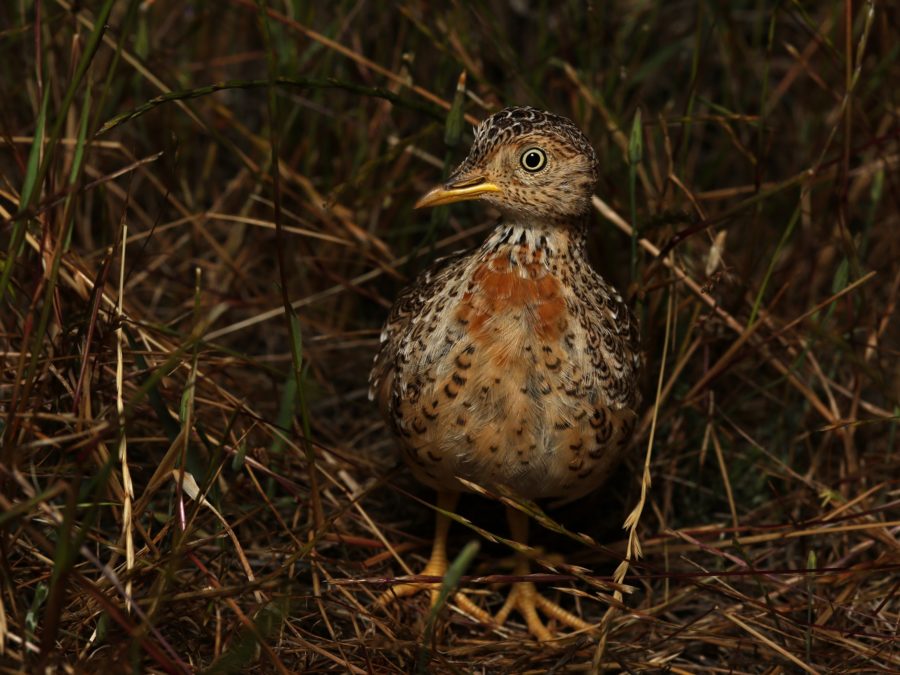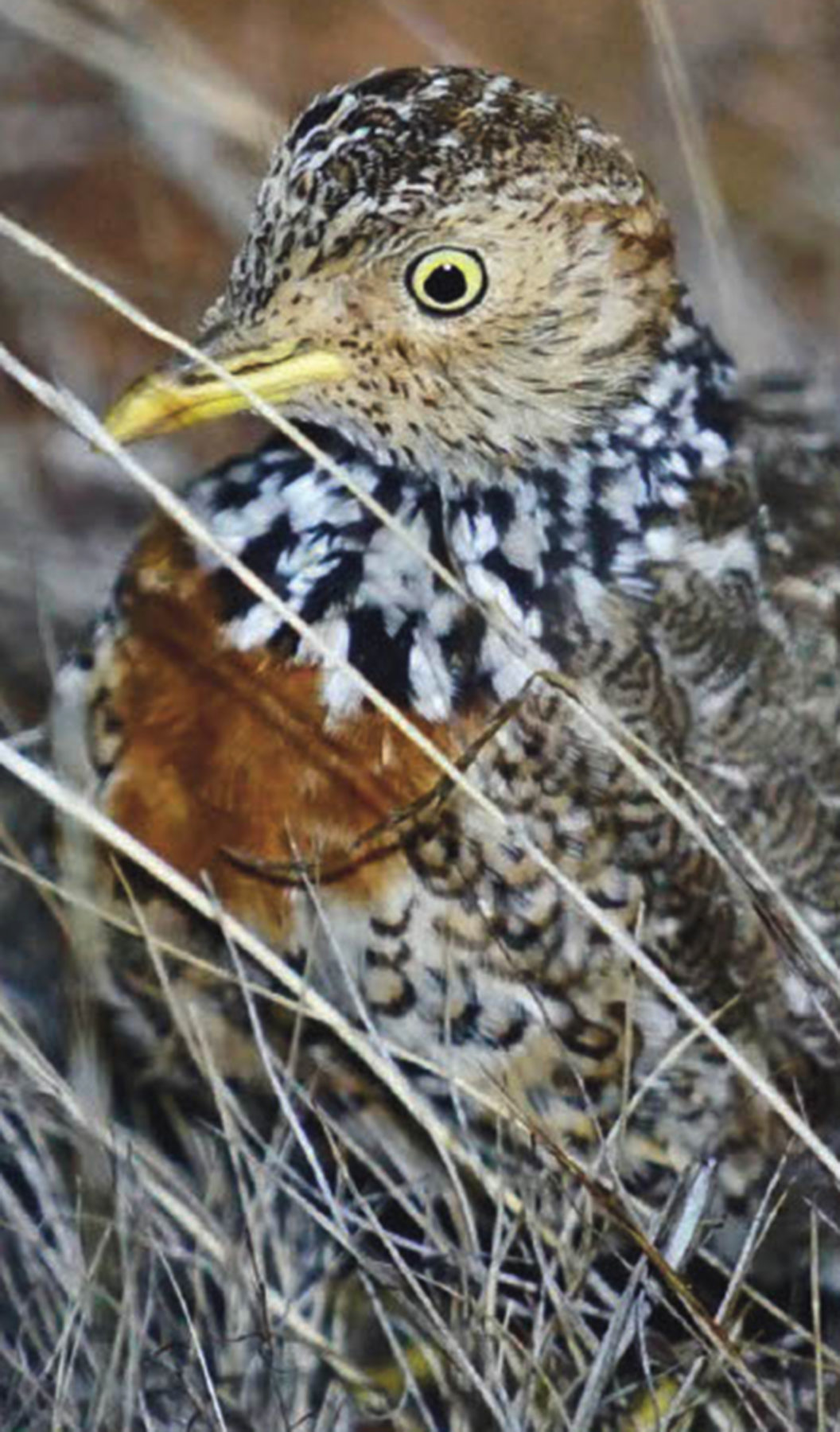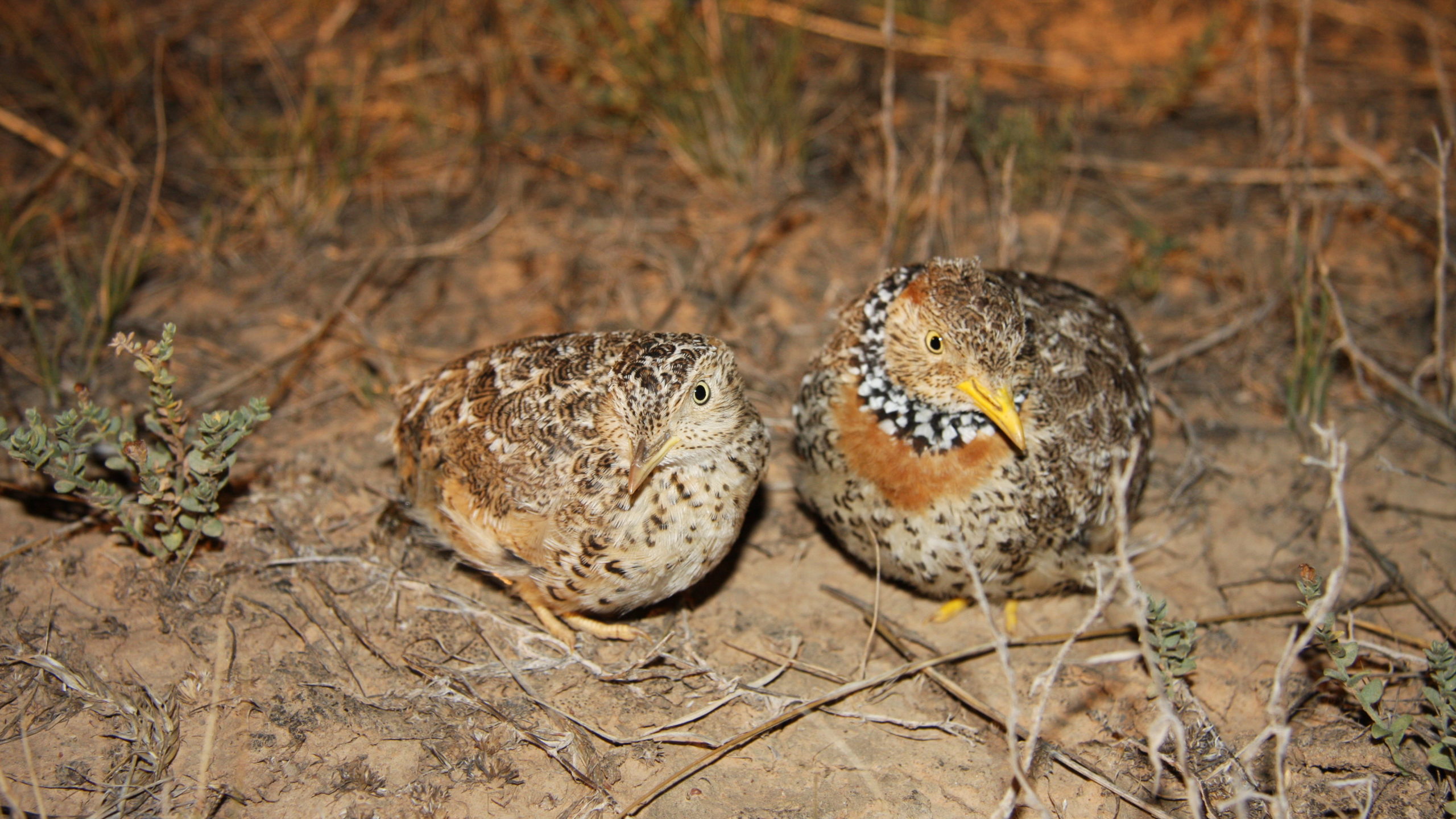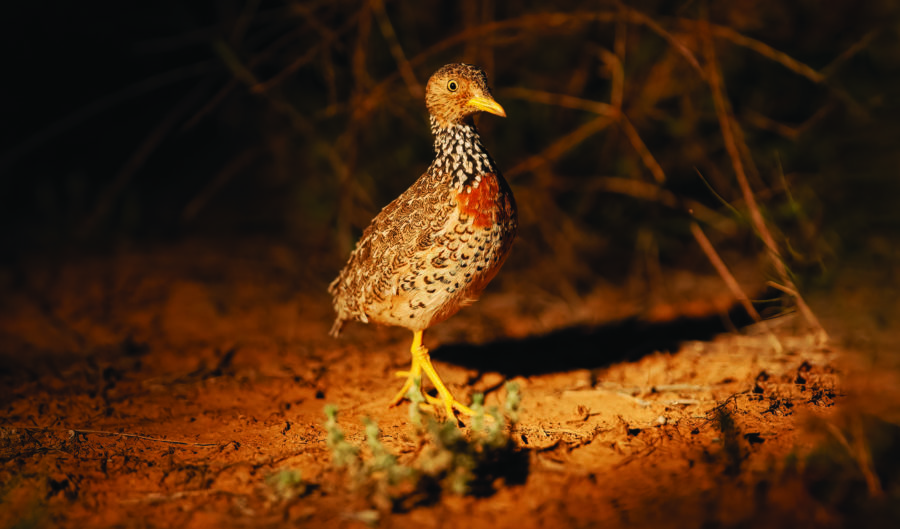Population boom for one of the world’s most unique and endangered birds

Australia’s plains-wanderer (Pedionomus torquatus) sits alone on its own evolutionary tree branch, being the only surviving species of the Pedionomidae family, an ancient lineage of birds that evolved in Gondwana more than 100 million years ago.
Once plentiful throughout Australia’s eastern grasslands, these birds are now only found in small fragmented populations. Numbers are in such steep decline that they are listed as Critically Endangered under the IUCN Red List, and under both the Commonwealth and Victorian governments.
They are also ranked number one priority for conservation action among birds of the world by the Zoological Society of London.
But a recent survey in northern Victoria has uncovered a record number of the small, quail-like birds.
“We detected 60 adults and 41 chicks. This is more than double the previous best result in 2018 when 30 adults and 17 chicks were detected,” says Dan Nugent, a PhD student at La Trobe University.
In fact, this is the biggest count of plains-wanderers in Victoria’s Northern Plains since monitoring began back in 2010.
“A further encouraging sign was that 85 per cent of monitoring sites supported plains-wanderers – the highest percentage of sites since surveys began,” says Dan.

While improvements in technology and survey methods over the years could contribute to the higher survey numbers, the growth in population is likely the result of both human and non-human intervention, says North Central CMA project manager, Laura Chant.
“The La Nina climate cycle facilitated a wide-spread and prolonged breeding event, which is likely to have boosted their numbers,” Laura says.
“Also, it’s highly likely the habitat management and protection measures we, and several partner organisations, have taken over many years to protect this incredible bird are proving to be highly effective – including conservation covenants and strategic grazing of conservation reserves.”

Plains-wanderer
Pedionomus torquatus
Plains-wanderers are small grassland birds, standing 20cm in height and weighing less than 100g. Their plumage gives them extremely good camouflage in grasslands, making them difficult to locate.
Despite their similar appearance to a quail, the Plains-wanderer is highly unique in an evolutionary sense, being the sole member of its Family and having no close relatives.
In contrast to many bird species, females are larger and more colourful than the males, with a broad black collar with white streaks or spots around the neck and a red-brown (rufous) patch on the upper breast
They compete for the male’s attention and, after laying a clutch of eggs, they leave the males to complete the incubation and raising of the chicks. The females remain in the breeding territory, where they may mate with a second male.
– Zoos Victoria
But while the latest survey results are celebrated, Dan says conservationists remain extremely concerned for the future of plains-wanderers.
“In Victoria, habitat loss driven by conversion of native grasslands to croplands is a major threat.
“With so little habitat remaining, the population will continue to be vulnerable; fox predation may also be a threatening process but remains a knowledge gap.”



